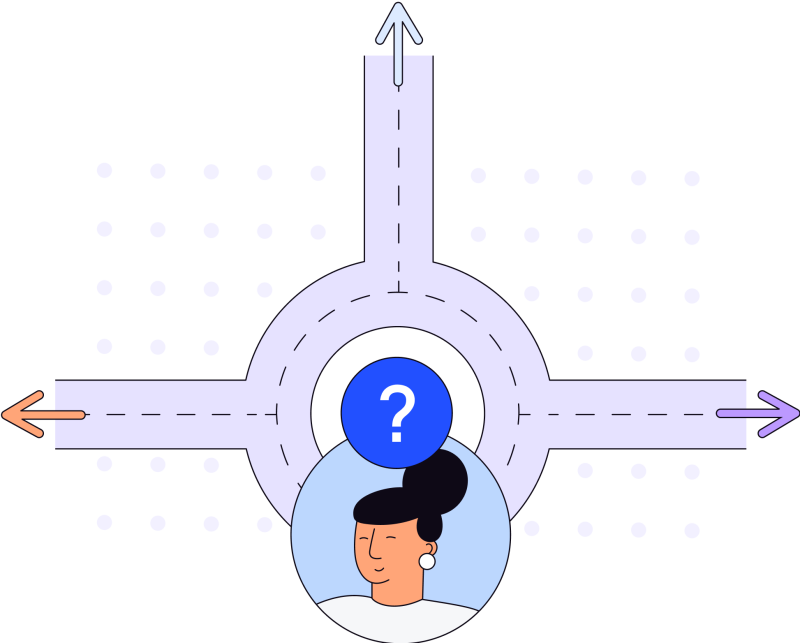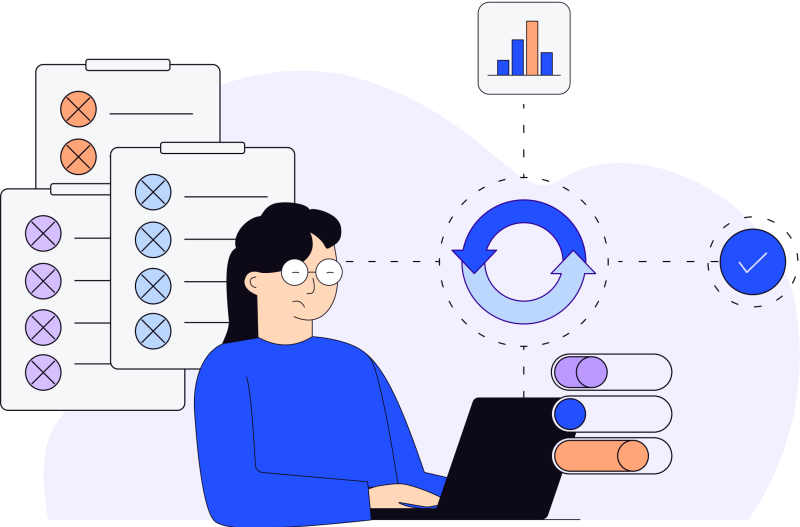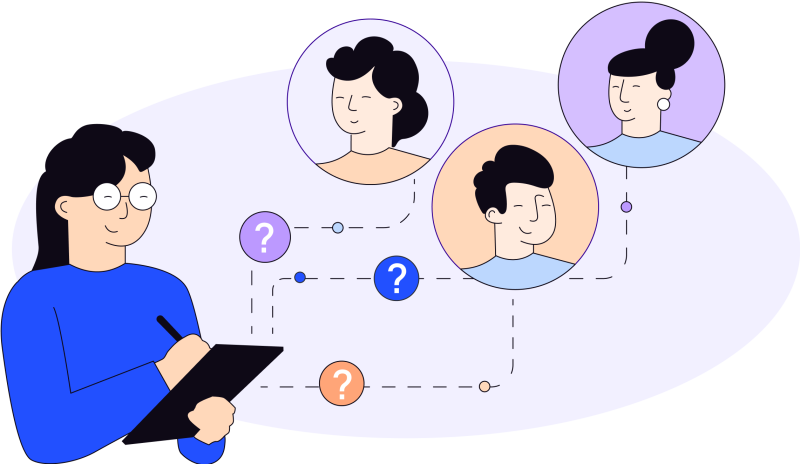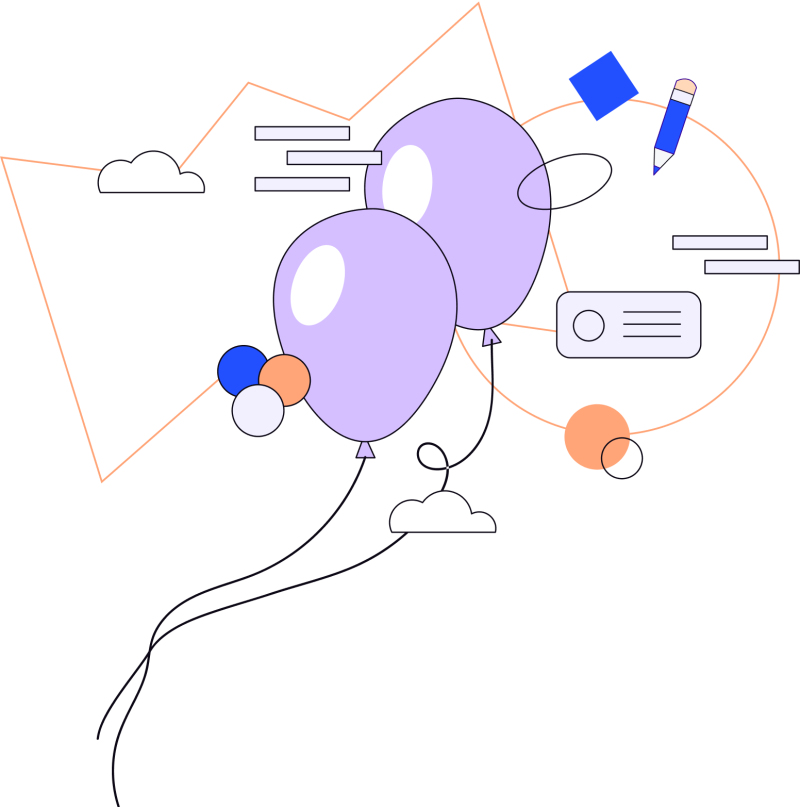The highway is blocked off at the on-ramp because they’re adding more lanes to account for the extra traffic thanks to your city’s tech boom.
Your football team lost last week, but this week they came back with new plays (and a redemptive win!) because they learned from their mistakes.
You hide pureed vegetables in pasta sauce because Jimmy threw broccoli against the wall last night. He won that battle, but you’ll win the Eat Your Veggies war!
Iteration is everywhere. But is it baked into how you design your digital product?
Iteration is a never-ending (yet reliably rewarding) process by which your team works more efficiently to design and ship better features faster. It’s a proven money-saving, investor-alluring, and user-first design tool. And it’s time to join the movement.
The Iterative Design Process Saves Time, Money, and Stress
You can research, hypothesize, and collect data all you want. But until your users scroll, click, and swipe through your product (and subsequently give you feedback) you never really know what they think about a feature or how they’ll engage with something new.
Instead of throwing your hands up in defeat, adopt iteration as an essential part of your design process. After all, users generally respond better when they’ve tested out a product compared to when they’re given a hypothetical question. So based on the data you’ve used to inform your design, make adjustments, let your users show you what’s resonating, and then get back to work making it better.
An iteration cycle can look different depending on what process you find works best for your team. But here’s what a common workflow involves:
Initial planning
Defining requirements
Initial design
User testing
Design
Development
Deployment
(More) testing
Evaluation
Planning
Lather, rinse, repeat.
As you can see, refining what you’ve designed is already baked into the process, meaning if you want to fix something before development, you can! No more asking your developers to go back and re-design something after you’ve already shipped it (and confused a lot of users). No more wondering what works for users, because you can keep track when you make a new discovery!
With iteration, not only is your team more productive, but your stakeholders are able to see the progress as it’s happening. It’s a great trust booster and makes a smoother relationship all around.
Speaking of relationships, it’s a brand loyalty builder. Why? Because your users will see that you’re constantly making improvements. It shows you listen and do. And that’s part of what makes for a sticky user experience.
7 Tricks to Getting the Most Out of Your Digital Product’s Iterations
Instead of incremental design where you start small and build until a final product is made, iterative design means your product is never truly finished. You’re constantly in the mindset of learning and improving. It’s like the self-help method of product design!
At webuild, we have a lot of iterative design under our belt. Here’s the best of what we’ve learned.

Begin with the end in mind. Depending on what your future state product looks like, iterate on features that align with your goals.

Start small. The key to successful iterative design is listening to user feedback and implementing those desired changes. So while you may be inspired to start big, don’t. Start small. Avoid building too much before getting your first round of feedback.

Keep an open mind. Post-feedback, avoid the temptation to settle on one solution too early. Cast a wide net of possibilities and then reel it in over time, testing along the way. This could look like designing two prototypes that solve the same problem in different ways, then presenting the two to users to test which performs better.

Re-vamp ‘til you cramp. Ok, we’re not advocating for actual physical cramping. But build as many prototypes as you can stand. The more you create, the more possibilities there will be on the table. The winner will be in there somewhere!

Succeed in failing. Be willing to fail and learn from those failures! If you never allow yourself to mess up, you’ll never truly discover different opportunities. We like this quote from Jones + Waddell: “Value experimentation and user testing over clean design only existing on paper. Every time.”

Keep asking questions. Your users will tell you anything you need to know. So ask questions constantly. Does this bring value? Is this what you need? What’s not working about this?

Let it go. Sometimes iterative design is an exercise in letting go. For the best interest of your product, there will be times when you should abandon your beloved ideas for what resonates best with your users.
The Best Time to Iterate is All the Time — But Not on Everything
Like user testing, iterative design should be happening as often as possible. But there are times when it’s more beneficial to use it than others. For example, if stakeholders aren’t sure what they’re looking for, iterative design can be a quick way to try different things out until you’ve landed on the target — without using up resources along the way.
Still, you have to pick your battles. You’re only human and you can only juggle so much. So while you do want to constantly iterate, it’s key to zero in on what you want to iterate. Focus your iteration on the most important features so you don’t diminish returns.
Finally, how do you know when you’re done? Simple. Pick a certain metric you’d like to hit or define a goal you’d like to see a feature achieve. When you nab those, it’s on to the next iteration!
What the End Result of Iterative Design Can Look Like
If you need a little inspiration about what’s possible with iteration, look around you.
When you dropped off your kid at school, did you go through a crosswalk? That was an iteration to allow for better, safer traffic flows for both pedestrians and cars.
What about reorganizing your clothes closet? Just look to Marie Kondo for some next-level iterative action.
For more digital product iteration inspiration, consider Quadpay. When the Fintech app was acquired and merged with Zip, it was clear that the UX/UI needed some attention. Plus, in order to keep growing, they needed some alluring differentiators. Iteration got them to a place where they were able to firmly stand out, earning a 4.8 star app rating and millions of users.
Or, take a look at what GoSite did. This startup aimed at serving small business owners has been through multiple iterations to get to where it is today (read: 10x the revenue and $60 million raised!) Their iterations decreased churn thanks to a new instant website builder, free trial onboarding, and improved first-time user experience.
If your team adds iterative design to your process, we can’t guarantee you’ll achieve perfection. In fact, we hope you fail. Because in failing, you’re better able to see where you need to improve — and you can get there faster because you know what doesn’t work.
What we can guarantee is happier users, a more focused and motivated team, and the feeling that you can always pursue your great ideas. If you need help getting started, we’ve got your back.











